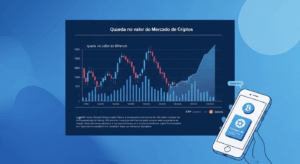SWIFT, the traditional global financial messaging network, is developing its own blockchain to modernize international payments, marking its entry into the billion-dollar race for digital assets. Learn how this initiative differentiates from Ripple and the potential impacts it may have on the financial market.
SWIFT and the New Chapter of Blockchain Technology
Known as the backbone of international bank transfers, SWIFT announced a collaboration with Consensys, a company specialized in Ethereum solutions, to build a blockchain infrastructure capable of processing transactions faster and more economically.
This project aims to create a shared ledger that connects private blockchains used by financial institutions with public networks, supporting stablecoins and tokenized assets. In this way, the platform adds efficiency and interoperability without requiring banks to abandon their existing systems.
Different from Ripple, but in the Same Race
Although Ripple and its XRP token already operate in the cross-border payment arena, SWIFT’s strategy is distinct: instead of adopting a single cryptocurrency, it bets on a network that integrates directly with traditional banks and institutions. This can be seen as a response to the growing adoption of stablecoins, which move trillions of dollars globally and threaten SWIFT’s dominance in the international payments market.
Challenges and Opportunities in the Trillion-Dollar Race for Digital Payments
The growing use of stablecoins as a means of settlement may reduce financial institutions’ dependence on the SWIFT system, driving the need for SWIFT itself to innovate technologically to maintain its relevance. The development of SWIFT’s blockchain represents an attempt to protect its market share as the global payment ecosystem evolves.
However, this race is not just against Ripple. The arrival of new digital systems driven by regulated digital currencies and asset tokenization creates a broad competitive environment. This movement could radically transform the landscape of international financial transfers in the coming years.
Tests and Partnerships with Major Banks
Although the project is still in the prototype stage, names like JP Morgan and Deutsche Bank are already participating in initial tests. This validation by market leaders demonstrates the seriousness and potential of SWIFT’s initiative, which aims to integrate blockchain innovation with the norms and regulations of traditional banks.
Conclusion
SWIFT’s move to launch its own blockchain highlights the intensity of the battle for the future of digital financial transactions. The collaboration with Consensys emphasizes that traditional institutions are seeking to move beyond the role we know, preparing for a new era where digital assets and decentralized networks are essential.
To stay updated with the latest trends and forecasts about Bitcoin, Ethereum, and Solana reaching new all-time highs, stay connected with our special coverage.










